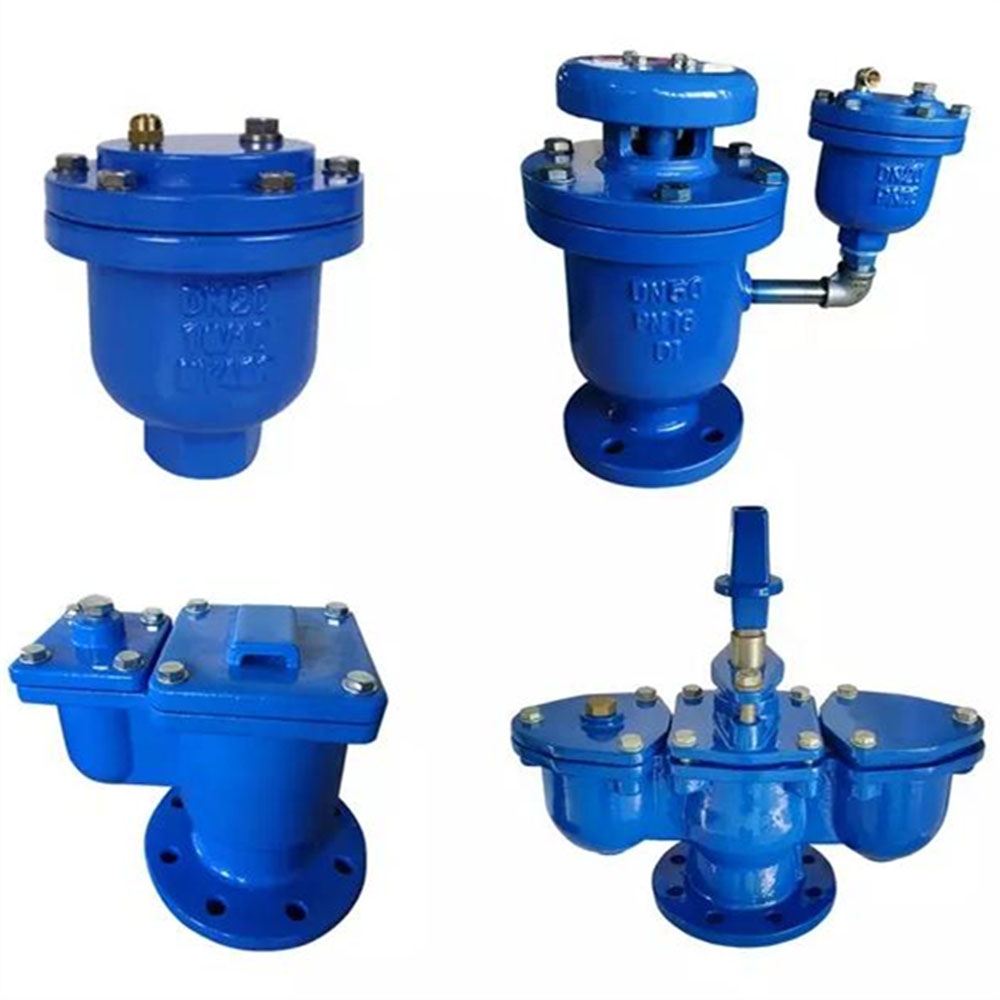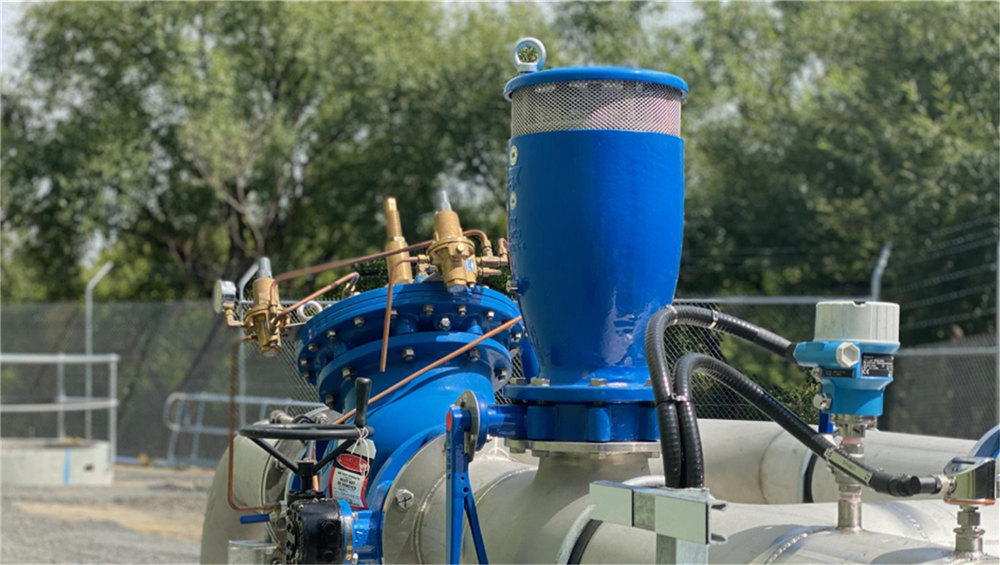The air release valve is a necessary equipment for the rapid removal of gas in the pipeline, which is used to improve the efficiency of the water conveying equipment and protect the pipeline from deformation and rupture. It is installed at the outlet of the pump port or in the water supply and distribution line to remove a large amount of air from the pipe to improve the efficiency of the pipe and pump. In case of negative pressure in the pipe, the valve can quickly suck in air to protect the damage caused by negative pressure.
When the water pump stops working, negative pressure will be generated at any time. The float drops at any time. In the exhaust state, the buoy pulls down one end of the lever due to the action of gravity. At this time, the lever is in the inclined state, and there is a gap in the contact part of the lever and the exhaust hole.
The air is discharged by the vent hole through this gap. With the discharge of air, the water level rises and the buoy floats upward under the buoyancy of water. The sealing end face on the lever gradually presses the upper vent hole until the whole vent hole is completely blocked and the air release valve is completely closed.

Precautions for setting air release valve:
1.The air release valve must be installed vertically, that is, it must ensure that the internal buoy is in a vertical state, so as not to affect the exhaust.
2.When the air release valve is installed, it is best to install it with the partition valve, so that when the air release valve needs to be removed for maintenance, it can ensure the sealing of the system and the water does not flow out.
3.The air release valve is generally installed at the highest point of the system, which is conducive to improving the exhaust efficiency.
The function of the air release valve is mainly to remove the air inside the pipeline. Because there is usually a certain amount of air dissolved in water, and the solubility of air decreases with the increase of temperature, so in the process of water circulation gas gradually separated from the water, and gradually gathered together to form large bubbles or even gas column, because of the supplement of water, so there is often gas production.
Generally used in independent heating system, central heating system, heating boiler, central air conditioning, floor heating and solar heating system and other pipeline exhaust.

Performance requirements of air release valve:
1.The air release valve should have a large exhaust volume, and when the empty pipe of the pipeline is filled with water, it can realize rapid exhaust and restore to normal water supply capacity in a very short time.
2.When the air release valve has negative pressure in the pipe, the piston should be able to open quickly and inhale a large amount of external air quickly to ensure that the pipeline will not be damaged by negative pressure. And under the working pressure, the trace air gathered in the pipeline can be discharged.
3.The air release valve should have a relatively high air closing pressure. In a short period of time before the piston is closed, it should have sufficient capacity to discharge the air in the pipeline and improve the water delivery efficiency.
4.The water closing pressure of the air release valve should not be greater than 0.02 MPa, and the air release valve can be closed under lower water pressure to avoid a large amount of water gushing.
5.Air release valve should be made of stainless steel float ball (float bucket) as opening and closing parts.
6.The air release valve body should be equipped with an anti-impact protection inner cylinder to prevent the premature damage of the floating ball ( floating bucket ) caused by the direct impact of high-speed water flow on the floating ball ( floating bucket ) after a large amount of exhaust.
7.For DN≥100 air release valve, split structure is adopted, which is composed of a large number of air release valve and automatic air release valve to meet the requirements of pipeline pressure. The automatic air release valve should adopt a double lever mechanism to greatly enlarge the buoyancy of the floating ball, and the closing water level is low. The impurities in the water are not easy to contact the sealing surface, and the exhaust port will not be blocked, and its anti-blocking performance can be greatly improved.
At the same time, under high pressure, due to the effect of the compound lever, the float can drop synchronously with the water level, and the opening and closing parts will not be sucked by high pressure like traditional valves, so as to exhaust normally.
8.For conditions with high flow rate, frequent starting of water pump and diameter DN≧100, buffer plug valve should be installed on the air release valve in order to slow down the water impact. Buffer plug valve should be able to prevent a large amount of water without affecting a large amount of exhaust, so that the efficiency of water delivery will not be affected, and effectively prevent the occurrence of water hammer.
Post time: Jan-16-2023
